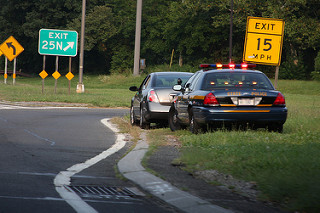 An October article in the New York Times presented research into the nature of the African-American experience of police traffic stops. Concentrating on Greensboro, NC and a small group of cities that have made a commitment to keep detailed records which can be reviewed (credit is due for that), the article presented a powerful assessment of the reality experienced by people of color in dealings with the police. The findings are not (or should not be) any surprise. The chances of being charged with something or having your car searched (or other negative results) are far lower if you are white.
An October article in the New York Times presented research into the nature of the African-American experience of police traffic stops. Concentrating on Greensboro, NC and a small group of cities that have made a commitment to keep detailed records which can be reviewed (credit is due for that), the article presented a powerful assessment of the reality experienced by people of color in dealings with the police. The findings are not (or should not be) any surprise. The chances of being charged with something or having your car searched (or other negative results) are far lower if you are white.
This blog is about the arts and community engagement so one might think the issue is not relevant. But any effort to connect with new communities demands understanding those communities. On a number of occasions I’ve highlighted the issue of privilege (including The P Word). Certainly simple justice is one reason for doing so. However, the arts establishment in which many of us work is in the minds of many very closely associated with power and privilege. Negative associations with any element of power bleed over into views of the arts. So for some, overtures from the world of the arts can be profoundly unwelcome. The arts organization encountering lack of enthusiasm or even hostility on the part of those with whom it is hoping to connect needs to understand the source of the feelings and find ways to demonstrate not only passive good will but the capacity for positive action.
And this is not simply an issue in African-American communities. The same principle is in play in any group that lacks social, political, or economic power. In the last year I’ve worked in places where there are more Hispanics/Latinos or Native Americans than African-Americans and the issues of power and privilege are identical, including the “driving while . . . .” This is even true when those communities are larger than the white one.
The arts may not be the cause of the disparities (although there is some thinking that must be done on that score as well), but, as a result of inequity and injustice, they suffer in attempting to expand reach. The arts can be a powerful force for highlighting critical issues as well as for enhancing understanding. Arts organizations, in seeking to become more valuable to more people–an essential element in long-term viability, cannot afford to ignore the lived experience of those with whom they try to connect and that experience’s impact on how the arts are viewed.
Engage!
Doug
Photo:![]() Some rights reserved by dwightsghost
Some rights reserved by dwightsghost

Great job flagging this! Artists who address social issues should be thinking about how to treat the subject.